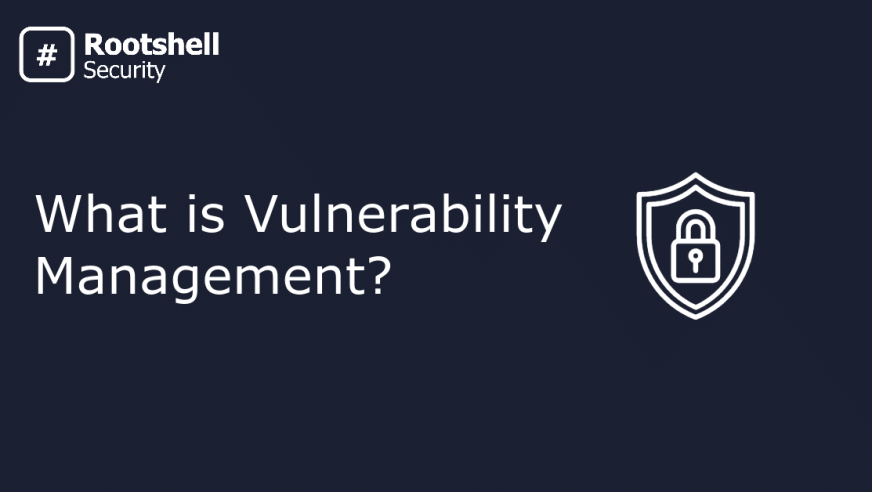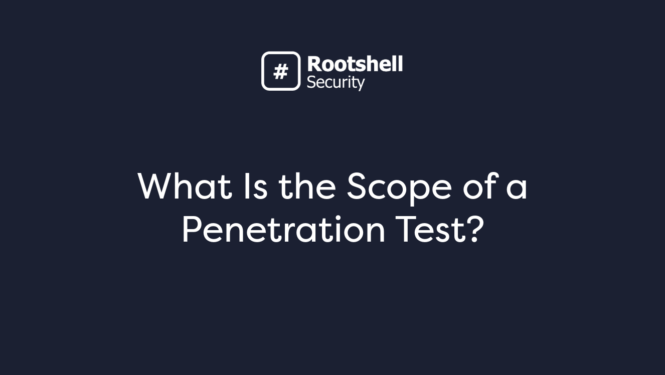The Ultimate Guide to Vulnerability Management
Organizations face a constant threat from cyber attackers seeking to exploit weaknesses in their systems. Vulnerability management is the process of identifying, assessing, prioritizing, and addressing these security gaps to protect digital assets. According to recent statistics from Cyberpress, in 2024, over 40,000 Common Vulnerabilities and Exposures (CVEs) were reported, marking a 38% increase from the 28,818 CVEs published in 2023.
In this blog post, we’ll explore what vulnerability management is and highlight its crucial role in strengthening your security defenses.
In this guide, we start with the basics, explaining what vulnerability management is and why it matters. From there, we’ll look into the practical side, covering tools, methodologies, and real-world examples that help security teams identify and address vulnerabilities before they become threats. We’ll cover the latest trends in vulnerability management, from automation and continuous monitoring to cloud security integration, all of which are key to a strong cybersecurity strategy.

Vulnerability Management: How It Works
Vulnerability management is a proactive approach to identifying, assessing, prioritizing, and remediating security vulnerabilities within an organization’s systems, applications, and network infrastructure. This process aims to minimize the attack surface and reduce the risk of cyber threats in the context of risk management.
At its core, vulnerability management involves the continuous vulnerability monitoring of the IT environment to identify new vulnerabilities and assess existing ones. Security teams use specialized tools, known as vulnerability scanners, to conduct regular vulnerability scans. These scans are designed to identify vulnerabilities and other weaknesses that could be exploited by malicious actors.
According to Gartner, “Vulnerability management remains a critical security operations activity that helps organizations identify assets, mitigate threats and meet compliance mandates.” (Marketing Guide for Vulnerability Assessment, August 2023)
The Most Common Vulnerabilities
The OWASP Foundation regularly updates its Top 10 list of the most common web application vulnerabilities. The previous edition highlighted common issues such as:
- Broken access control
- Cryptographic failures
- Injection
- Insecure design
- Security misconfiguration
- Vulnerable and outdated components
- Identification and authentication failures
- Software and data integrity failures
- Security logging and monitoring failures
- Server-side request forgery
Differences Between a Vulnerability, Risk, and Threat
Before diving deeper into vulnerability management, it’s essential to understand the distinctions between key terms often used interchangeably:
Vulnerability
A vulnerability is a weakness or flaw in a system, application, or network that could be exploited to compromise its security. These weaknesses can stem from bugs, programming errors, or misconfigurations in hardware or software.
Some vulnerabilities can be fixed through patching, while others may arise from system misconfigurations, creating additional attack paths.
Common ways attackers exploit vulnerabilities include:
- Exploiting misconfigurations
- Phishing or social engineering to steal credentials
- Malware or malicious software injection
- Denial of service (DoS) or distributed denial of service (DDoS) attacks
- Cross-site scripting (XSS) attacks on websites
- Man-in-the-middle (MitM) attacks on unsecured networks
- SQL injection for unauthorized access to sensitive data
- Zero-day exploits before patches are released
Risk
Risk refers to the potential harm or damage that could occur if a vulnerability is exploited. It considers both the likelihood of an attack happening and the severity of its impact on an organization’s systems, data, or operations. Risks can vary depending on factors such as the value of the affected assets, the exposure of the systems, and the effectiveness of existing security controls.
Common aspects of risk include:
- Business impact: Loss of revenue, reputational damage, or legal penalties resulting from a breach
- Operational impact: Disruption to services, downtime, or degraded system performance
- Financial impact: Costs associated with fixes, fines, or compensation claims
- Likelihood of exploitation: The probability that a specific vulnerability will be targeted or successfully exploited
- Regulatory impact: Potential non-compliance with industry standards or regulations
Managing risk involves assessing vulnerabilities, understanding threats, and implementing controls to reduce the likelihood and impact of potential security incidents.
Threat
A threat is any specific event, actor, or circumstance that has the potential to exploit vulnerability and cause a security breach or compromise.
Common types of threats include:
- Cyber threats: Malware, ransomware, phishing attacks, SQL injection, or zero-day exploits
- Insider threats: Employees or contractors misusing access privileges, either accidentally or maliciously
- Physical threats: Theft of devices, unauthorized access to facilities, or environmental hazards like fire or flooding
- Social engineering threats: Manipulative tactics to trick individuals into revealing sensitive information
- Technical failures: Hardware malfunctions, software bugs, or network outages that could be exploited
Understanding threats helps organizations anticipate how vulnerabilities might be targeted and prioritize protective measures to reduce potential damage.
The Vulnerability Management Process
Vulnerability management is a continuous, structured approach to identifying, evaluating, and fixing weaknesses.. A strong process helps your company reduce risk, protect digital assets, and maintain compliance. While specifics may vary depending on the organization or tools used, most vulnerability management programs follow these steps:
1. Asset Discovery
Before vulnerabilities can be managed, organizations must know what they have. Asset discovery involves identifying all devices, applications, and systems within the network. This step ensures no resources are overlooked.
2. Vulnerability Identification
Once assets are mapped, the next step is to scan systems for known vulnerabilities using tools such as vulnerability scanners, endpoint security solutions, or manual assessments. This step highlights weaknesses, misconfigurations, or outdated software.
3. Risk Assessment & Prioritization
Not all vulnerabilities pose the same threat. Risk assessment evaluates the potential impact and likelihood of exploitation, helping security teams prioritize which vulnerabilities require immediate attention. Factors include exploitability, asset criticality, and business impact.
4. Remediation & Mitigation
After prioritization, vulnerabilities are addressed through patching, configuration changes, or other mitigation strategies. For high-risk vulnerabilities, temporary compensating controls may be implemented while full remediation occurs.
5. Verification & Reporting
Once remediation steps are applied, verification ensures vulnerabilities are effectively resolved. Reporting provides stakeholders with visibility into risk reduction and compliance status.
6. Continuous Monitoring & Improvement
Vulnerability management is an ongoing process. Continuous monitoring identifies new vulnerabilities as they emerge, and lessons learned from previous cycles help improve detection, prioritization, and remediation strategies over time.
Ranking and Categorizing Vulnerabilities
With countless security vulnerabilities to manage, prioritization is key. Risk-based vulnerability management and penetration testing rank vulnerabilities by CVSS scores, potential impact, and likelihood of exploitation, helping security teams address the most important issues first.
Let’s explore these in more detail-
CVSS Score: The Common Vulnerability Scoring System provides a standardized numerical score reflecting severity. Higher scores indicate greater risk.
Potential Impact: This considers how a vulnerability could affect systems, data, and business operations if exploited.
Exploitability: Evaluates how easily an attacker could leverage the vulnerability. Publicly available exploits or automated attack tools can increase risk.
Exposure Level: Determines whether the vulnerability is in an internal, external, or publicly accessible system, which affects its urgency.
Categorizing Vulnerabilities
Once ranked, vulnerabilities are grouped into categories to streamline remediation:
- Critical: Immediate attention required; could lead to major breaches or downtime.
- High: Significant risk, must be addressed promptly.
- Medium: Moderate risk; remediation can follow critical and high-priority fixes.
- Low: Minimal impact; may be monitored or scheduled for routine patching.
Vulnerability Management and Attack Surface Management
Vulnerability management and attack surface management (ASM) are closely related but differ in scope. While vulnerability management focuses on identifying and fixing known weaknesses, ASM takes a broader approach, discovering and monitoring all potential entry points across an organization’s digital footprint. The differences between the two are summarised in the table below:
Feature | Vulnerability Management (VM) | Attack Surface Management (ASM) |
Definition | Process of identifying, assessing, prioritizing, and fixing vulnerabilities. | Continuous discovery, monitoring, and evaluation of all potential entry points (attack surface) that could be exploited by attackers. |
Scope | Focused on known vulnerabilities in internal systems, software, and devices. | Focuses on the entire digital footprint, including exposed assets, cloud environments, third-party services, and unknown or unmanaged assets. |
Goal | Reduce risk by fixing or mitigating specific vulnerabilities. | Reduce overall attack surface by identifying unknown or exposed assets and potential security gaps. |
Tools Used | Vulnerability scanners, patch management software, endpoint security tools. | Asset discovery platforms, external attack surface scanning tools, threat intelligence platforms. |
Frequency | Periodic or scheduled scanning and assessment. | Continuous monitoring to detect new assets or changes in the attack surface. |
Outcome | Patch reports, risk scores, and remediation guidance. | Real-time visibility into the organization’s attack surface, with alerts on new or risky exposures. |
Focus | Known threats and weaknesses. | Unknown or unmanaged exposure points that could be exploited. |
Users | Security teams are responsible for patching and remediation. | Security operations, risk management, and cybersecurity teams are monitoring exposure and potential attack paths. |
Difference Between Vulnerability Management and Vulnerability Assessment
While vulnerability management and vulnerability assessment are related, they serve different purposes. Vulnerability assessment primarily involves the identification and assessment of vulnerabilities. On the other hand, vulnerability management encompasses a broader set of activities, including prioritization, remediation, and continuous monitoring.
Vulnerability Assessment
A vulnerability assessment is a point-in-time evaluation of an organization’s systems, applications, and networks to identify security weaknesses.
- Conducted periodically or on demand.
- Uses automated tools such as scanners to detect known vulnerabilities.
- Provides a report of discovered issues, often ranked by severity.
- Does not typically include remediation or ongoing monitoring.
Vulnerability Management
Vulnerability management is a continuous, proactive process that not only identifies vulnerabilities but also prioritizes, tracks, and remediates them over time.
- Involves regular scanning, risk-based prioritization, and patch management.
- Tracks vulnerabilities from discovery to resolution.
- Integrates with broader cybersecurity practices, including risk management and compliance.
- Focuses on continuous improvement to strengthen the overall security posture.
Benefits of Vulnerability Management
Effective vulnerability management offers numerous benefits to organizations, including:
Improved Security Position: Addressing vulnerabilities as and when will improve your security position and make it harder for attackers to breach their systems.
Reduced Attack Surface: Vulnerability management helps reduce the attack surface by identifying potential entry points for cybercriminals.
Compliance Maintenance: Many regulatory frameworks require organizations to have a strong vulnerability management program in place to ensure compliance.
Early Threat Detection: Continuous monitoring allows security teams to find vulnerabilities before they can be exploited.
Cost Efficiency: Proactive remediation reduces the financial impact of potential breaches, downtime, or emergency fixes.
Better Reporting and Metrics: Provides insights and reports for management, auditors, and compliance teams.
Strengthened Reputation: Demonstrating proactive security measures can improve trust with customers, partners, and stakeholders.
Common Challenges Faced in Vulnerability Management
1. Volume of Vulnerabilities
IT environments generate a large number of vulnerabilities across multiple systems, applications, and devices. Managing and prioritizing these can be overwhelming for security teams.
2. Prioritization of Risks
Not all vulnerabilities are equally important. Determining which issues pose the greatest risk, especially when considering business impact, exploit likelihood, and asset importance, can be complex.
3. Patch Management Delays
Even when vulnerabilities are identified, fixes are sometimes delayed due to system dependencies, testing requirements, or downtime concerns, leaving organizations exposed.
4. Integration with Existing Tools
Vulnerability management requires coordination with other security tools. Poor integration can lead to gaps in visibility and slower response times.
5. Limited Resources and Expertise
Many organizations lack the staffing or expertise needed to handle a large volume of vulnerabilities, particularly when specialized knowledge is required,
6. Regulatory and Compliance Pressures
Meeting industry-specific compliance requirements adds extra layers of complexity, as vulnerabilities must be fixed in line with strict timelines and reporting standards.
7. False Positives and Noise
Some vulnerability scanning tools generate false positives or duplicate alerts, which can waste time and distract security teams.
Why Choose Rootshell for Vulnerability Management
Automation plays an important role in vulnerability management, allowing organizations to quickly detect, prioritize, and fix vulnerabilities while freeing security teams to focus on complex tasks. Rootshell’s platform takes this a step further by enabling users to set custom rules for assigning vulnerabilities, making sure that issues are addressed immediately without manual effort.
When selecting a vulnerability management solution, factors such as ease of use, scalability, reporting capabilities, and integration with existing security tools are all important. Rootshell excels in all these areas, providing real-time visibility into your security and simplifying the process.
Our platform combines over 20 years of cybersecurity expertise with cutting-edge technology, AI-led insights, and next-generation tools to help you identify, assess, and fix vulnerabilities. We tailor solutions to your needs and risk tolerance.
Choosing Rootshell means partnering with a trusted leader in vulnerability management, combining expertise and continuous monitoring to protect your digital assets. Don’t leave your security to chance. Protect your organization and strengthen your defenses with Rootshell today.
Vulnerability Management FAQs
What is vulnerability management?
Vulnerability management is the continuous process of identifying, assessing, prioritizing, and remediating security weaknesses in systems, applications, or networks to reduce the risk of exploitation by attackers.
Why is vulnerability management important?
With cyber threats constantly evolving, vulnerabilities can be exploited to steal data, disrupt services, or damage an organization’s reputation. Effective vulnerability management reduces exposure, ensures compliance, and strengthens overall cybersecurity.
How often should vulnerability scans be performed?
Frequency depends on the organization’s risk profile, but best practice is to conduct regular automated scans (weekly or monthly) alongside ad-hoc scans after major system changes, new deployments, or security updates.
How are vulnerabilities prioritized?
Vulnerabilities are typically prioritized based on severity, exploitability, asset value, and potential business impact. Critical issues affecting mission-critical systems are addressed first to reduce risk quickly.
Can vulnerabilities be fixed automatically?
Some vulnerabilities can be automatically patched, but others, especially those involving misconfigurations or complex systems require manual intervention.



